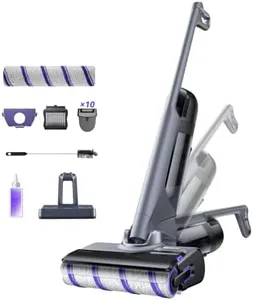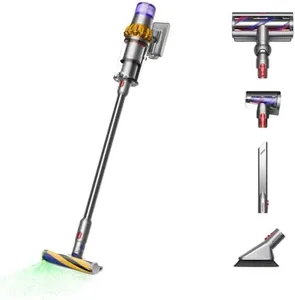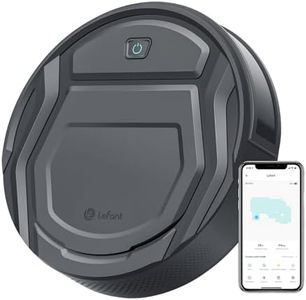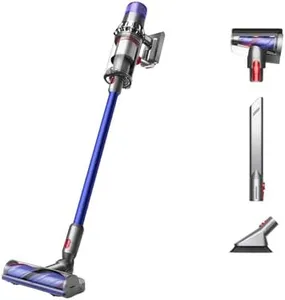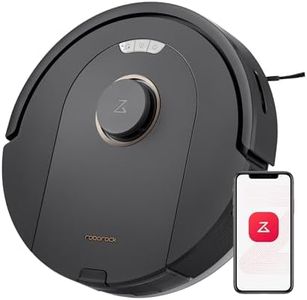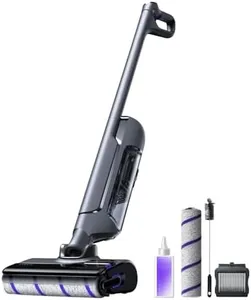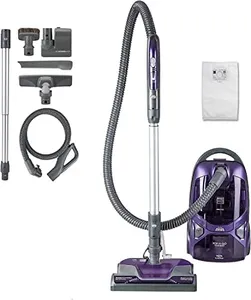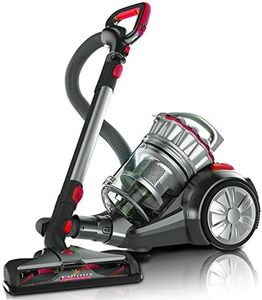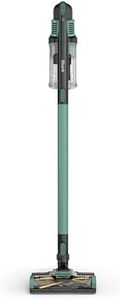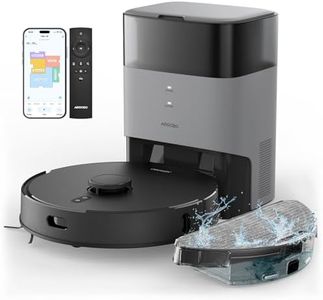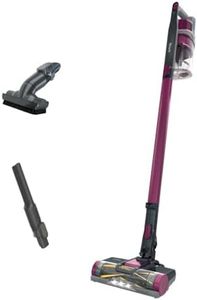We Use CookiesWe use cookies to enhance the security, performance,
functionality and for analytical and promotional activities. By continuing to browse this site you
are agreeing to our privacy policy
10 Best Vacuums
From leading brands and best sellers available on the web.#1
Winner
Buying Guide for the Best Vacuums
Choosing the right vacuum cleaner can make cleaning your home much easier and more effective. The best vacuum for you depends on your living space, the types of floors you have, whether you have pets, and your own preferences for convenience and features. Understanding the key specifications will help you find a vacuum that fits your needs and makes cleaning less of a chore.Type (Upright, Canister, Stick, Handheld, Robot)The type of vacuum refers to its design and intended use. Upright vacuums are great for deep cleaning carpets and larger areas, while canister vacuums are versatile and often easier to maneuver around furniture. Stick vacuums are lightweight and good for quick cleanups or smaller spaces, handheld vacuums are best for spot cleaning and cars, and robot vacuums offer hands-free cleaning for maintenance. Think about your cleaning habits and the layout of your home to decide which type will be most convenient and effective for you.
Suction PowerSuction power determines how well the vacuum can pick up dirt and debris. Higher suction is important for deep cleaning carpets and removing pet hair, while lower suction may be sufficient for hard floors or light messes. Suction is often measured in air watts or kilopascals, but not all brands use the same units. If you have thick carpets or pets, look for higher suction; for mostly hard floors or light cleaning, moderate suction is usually enough.
Filtration System (HEPA, Standard, Washable)The filtration system affects how well the vacuum traps dust and allergens. HEPA filters are the most effective, capturing tiny particles and making them ideal for allergy sufferers. Standard filters are less effective but may be fine if allergies aren’t a concern. Washable filters can be reused, saving money and reducing waste. If you or your family have allergies or asthma, prioritize a vacuum with a HEPA filter; otherwise, choose based on your maintenance preferences.
Bagged vs. BaglessBagged vacuums collect dirt in a disposable bag, which is easy to remove and less messy, but requires buying replacement bags. Bagless vacuums use a dustbin that you empty and reuse, which saves money but can be messier and may expose you to dust. If you want less contact with dust or have allergies, bagged might be better; if you prefer not to buy bags and don’t mind emptying a bin, bagless is a good choice.
Weight and ManeuverabilityThe weight and maneuverability of a vacuum affect how easy it is to use, especially if you have stairs or need to carry it between rooms. Lighter vacuums are easier to move and store, while heavier models may offer more power but can be harder to handle. Consider your physical comfort and the layout of your home—if you have multiple floors or limited storage, a lighter, more compact vacuum may be best.
Attachments and ToolsAttachments like crevice tools, upholstery brushes, and motorized pet tools expand what your vacuum can clean. More attachments are helpful if you have pets, lots of furniture, or want to clean above-floor areas like curtains or shelves. Think about the surfaces and spaces you need to clean—if you only vacuum floors, basic tools may be enough; for more detailed cleaning, look for a vacuum with a variety of attachments.
Corded vs. CordlessCorded vacuums offer unlimited run time but require access to power outlets and may limit your range. Cordless vacuums are more convenient and portable, but their battery life limits how long you can clean at once. If you have a large area to clean or don’t want to worry about charging, corded is a good choice; for quick cleanups or smaller spaces, cordless offers more flexibility.
Noise LevelNoise level is how loud the vacuum is during use, usually measured in decibels. Quieter vacuums are more comfortable to use, especially in apartments or if you have young children or pets. If noise is a concern, look for models advertised as quiet or check the decibel rating—lower numbers mean less noise.
